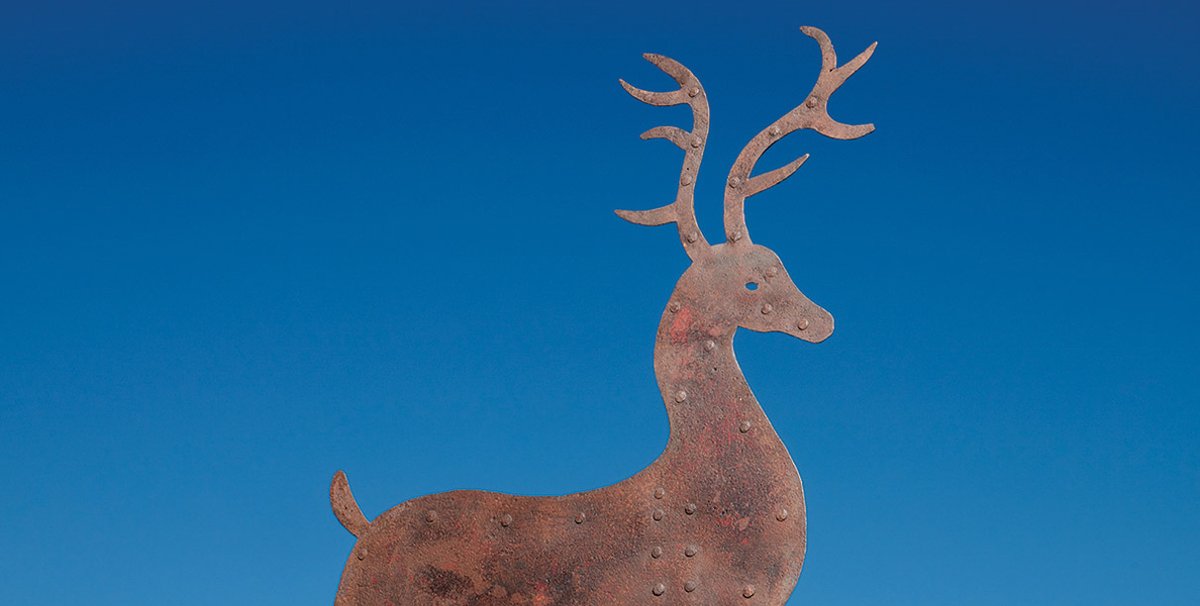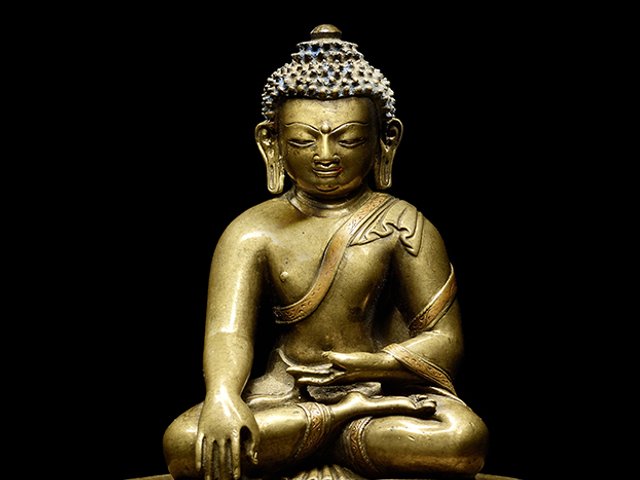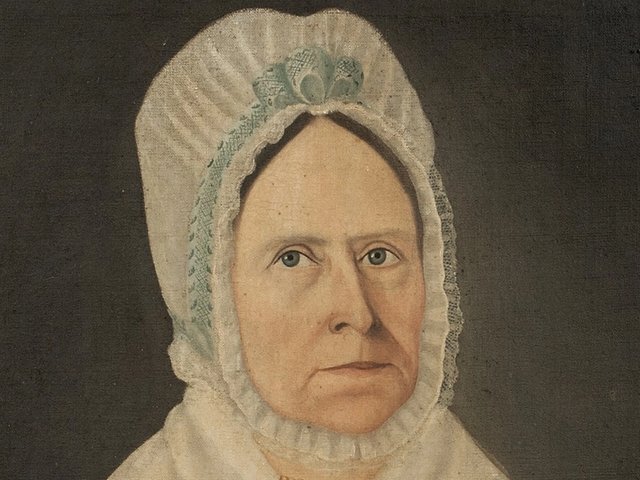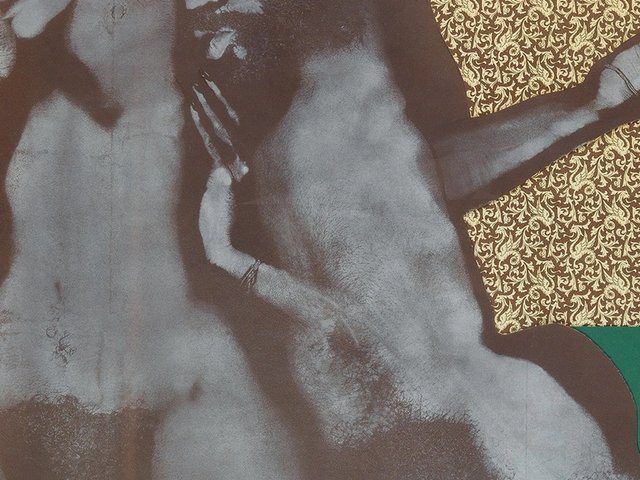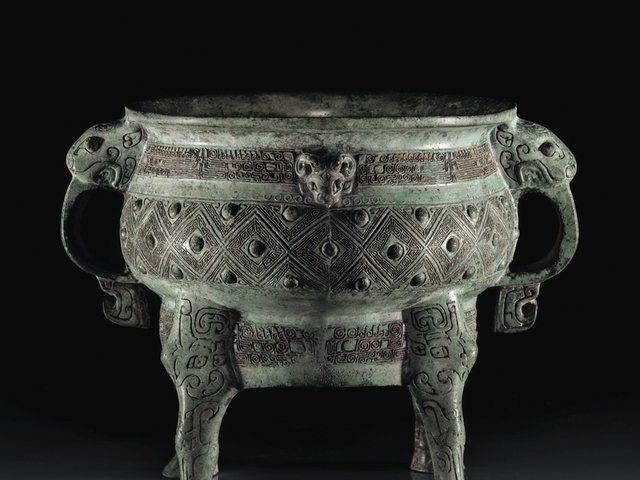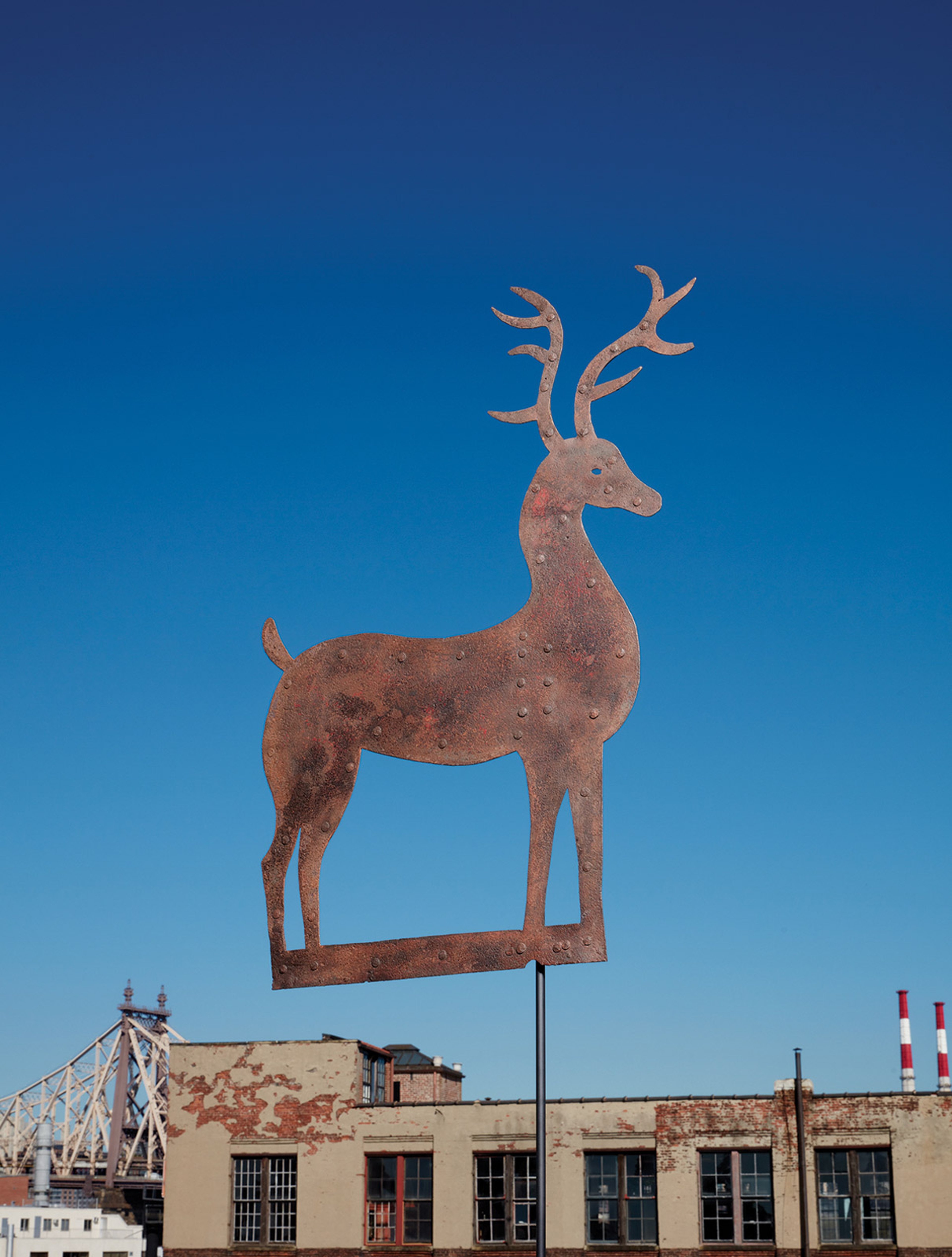
Reindeer on rooftops may be common come Christmas, but this stag weathervane is no sleigh-bound Comet, Cupid or Blitzen. This late 19th-century weathervane once sat atop the roof of the Florida home of Florence Knoll Bassett, a pioneer of the streamlined design aesthetic that defines the post-war American office interior. Weathervanes may not be a common sight in the Modern focused design sales at Phillips, but, says the auction house’s design specialist Kimberly Sørensen, American folk art “served as a major source of inspiration among modernists”. Weathervanes are enduring favourites of the folk art market, and sculptural form and original surface are all important—in 2006 at Sotheby’s New York, a copper Indian Chief weathervane, from around 1900, sold for a record $5.8m with fees. Primitive sheet iron stag weathervane (late 19th century). Design, Phillips, New York, 17 December. Estimate: $5,000-$7,000
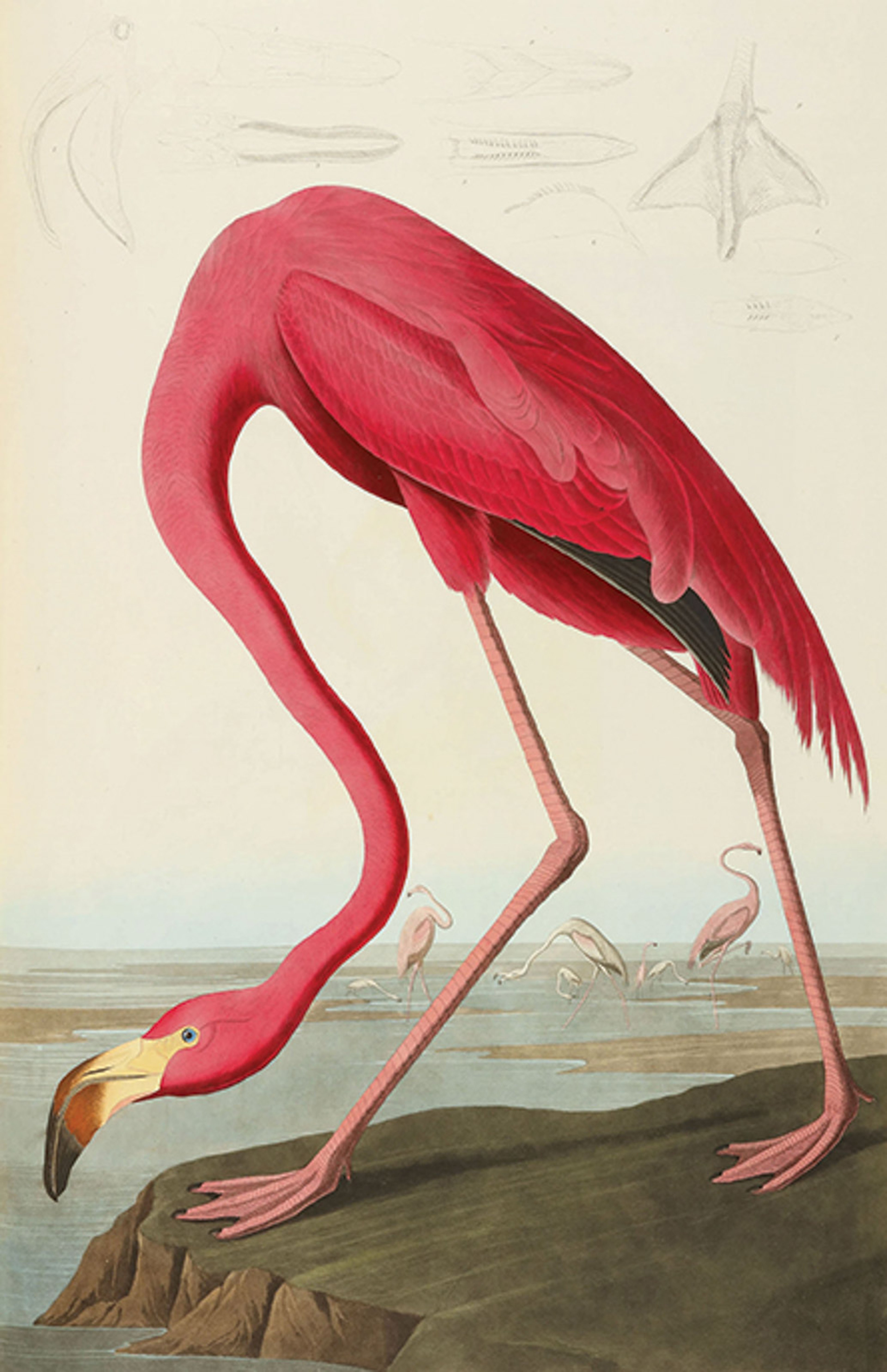
Audubon’s Birds of America is still revered as a major milestone in both natural history and book publishing more than a century-and-a-half after its creation. Just 119 complete sets of Birds of America, which has 435 hand-coloured plates depicting more than 1,000 species of winged beasts at life size, are known to be in existence today—104 are held in private institutions and the remaining 15 are in private hands. Originally sold via subscription, this “exceptional” early edition has spent 25 years in a private collection, making its sale a “rare” market event, according to Richard Austin, the head of Sotheby’s books and manuscripts department in New York. The auction house established the current record for Birds of America in London in 2010, when an edition sold for £7.3m ($11.5m), which also set the auction record for any book. John James Audubon, early subscriber edition of The Birds of America (around 1838). Single-lot sale following Fine Books and Manuscripts, Sotheby’s, New York, 18 December. Estimate: $6m-$8m
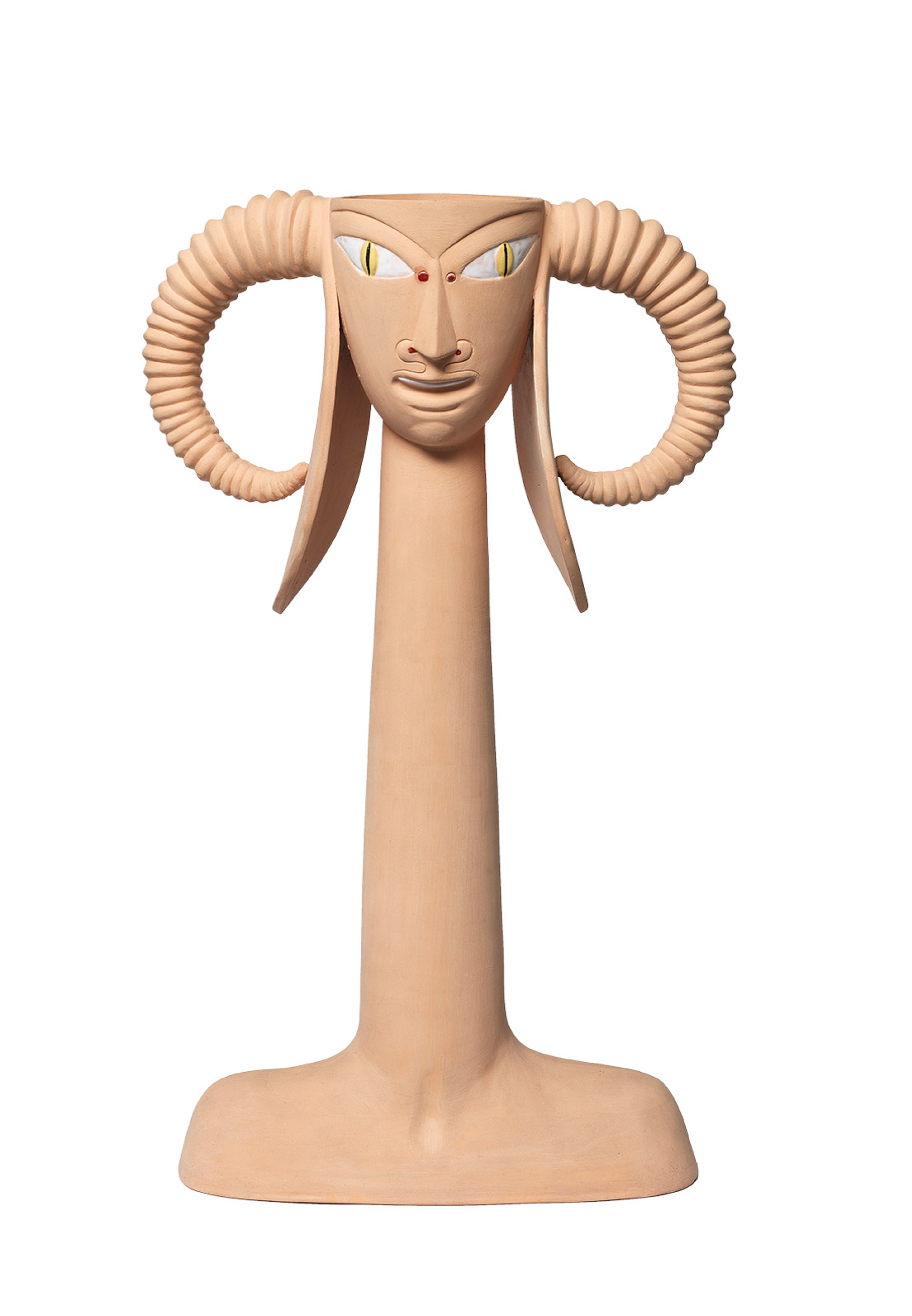
The mythological figure of the faun is an enduring motif in Jean Cocteau’s work, and this earthenware vase is arguably his most accomplished ceramic—the French Surrealist called it his Vendôme Column, according to Lucia Tro Santafe, the director of Bonhams’s prints and multiples department in the UK. “It was not easy to turn a long tube to produce the neck of the figure, and even less to balance on top of it a vase like an upturned half-rugby ball,” she says. The artist’s potters, Marie Madeline-Jolly and Philippe Madeline, were skilful—and careful—enough to produce an edition of 20 of which this is the last. Jean Cocteau, Grand Chêvre-cou (1958). Prints and Multiples, Bonhams, London, 11-12 December. Estimate: £15,000-£20,000

Ansel Adams, a master of American landscape photography, captured this image of the artist Georgia O’Keeffe and Orville Cox, the head wrangler of New Mexico’s Ghost Ranch, during a month-long camping trip with a group of friends in the south-west. The print is one of 150 photographs being sold to benefit the Center for Creative Photography at the University of Arizona, Tucson, of which Adams was a founder. All were given to the centre by Adams; this is the first time they have come to market. Ansel Adams, Georgia O’Keeffe and Orville Cox, Canyon de Chelly National Monument, Arizona (1937) Photography, Christie’s, New York, 10 December Estimate: $12,000-$18,000
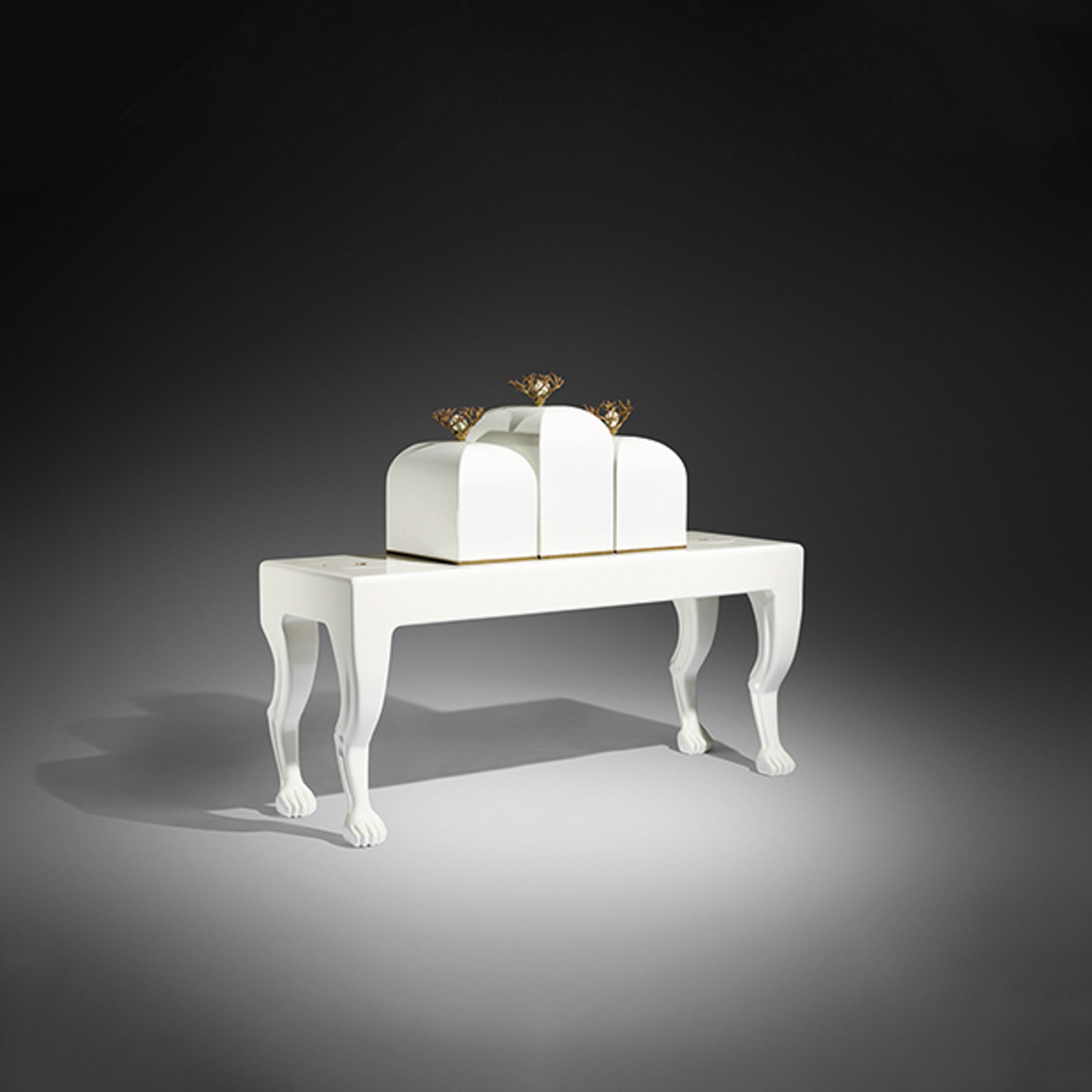
The late US designer John Dickinson knew how to imbibe in style. He rose to fame in the 1970s for his fun but functional furniture designs such as this gel-coated, fibreglass and brass console, which appropriates the claw-and-ball feet of antique furniture and features two removable ice buckets. The piece was devised for his private residence in San Francisco, a converted firehouse that doubled as his showroom. There is another version of this bar console in the San Francisco Museum of Modern Art, where it was shown in 1974 in the Art of Wine exhibition. John Dickinson, bar console for the Firehouse, San Francisco (around 1974) Important Design, Wright, Chicago, 10 December Estimate $30,000-$50,000
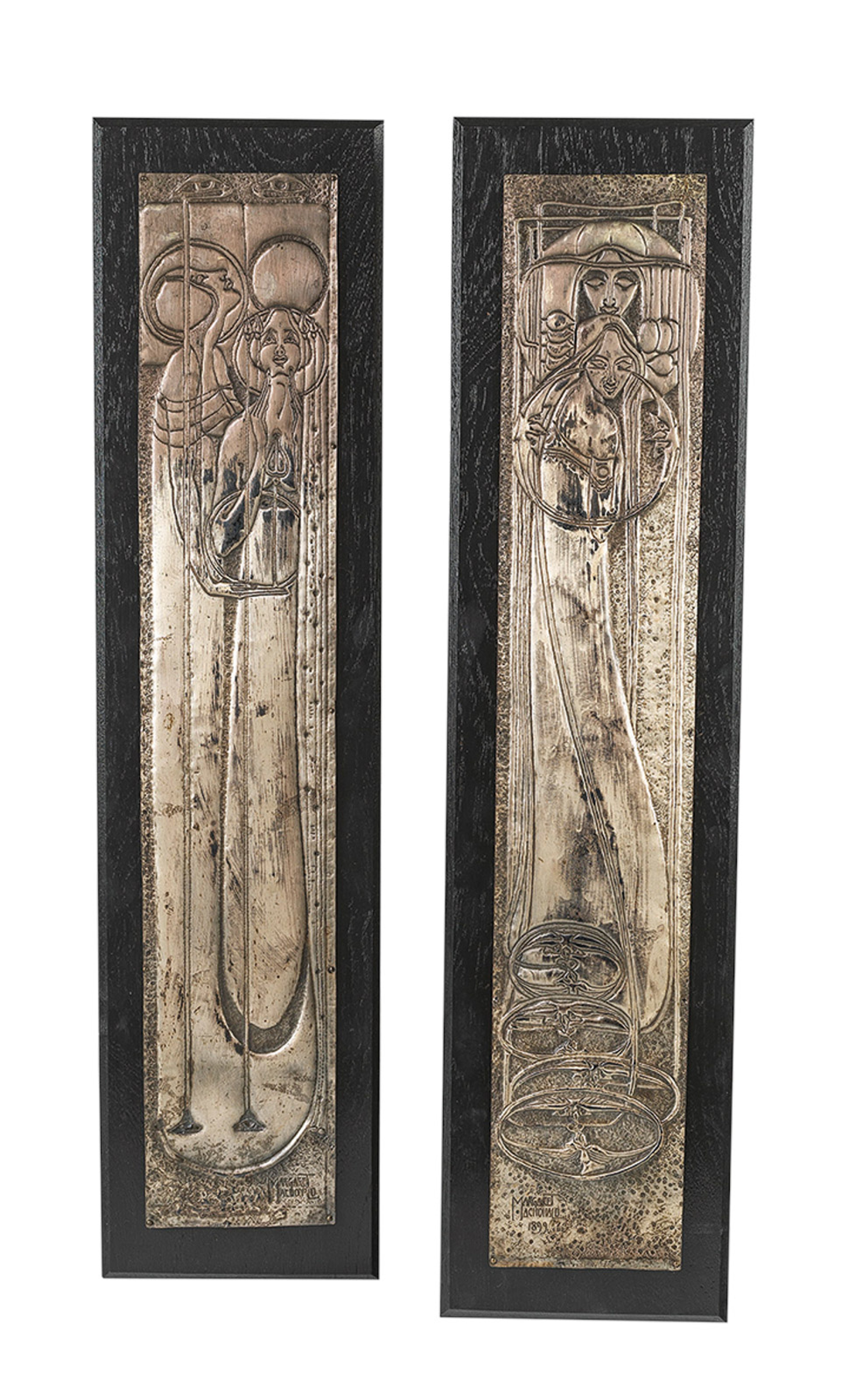
The Scottish Art Nouveau artist Margaret MacDonald made this pair of silver-plated reliefs for a smoking cabinet designed by her husband Charles Rennie Mackintosh, which was exhibited in the “Scottish Room” at the Eighth Secession Exhibition in Vienna in 1900. The cabinet was bought by Hugo Henneberg, a Wiener Werkstätte customer, but later disappeared—a 1977 article in the Burlington Magazine states: “It has, unfortunately, not been possible to discover where the Henneberg cabinet is today.” However, says Dorotheum’s specialist Magda Pfabigan, the reliefs reappeared when a Viennese collector—who had owned them since 2003—consigned them to auction. Margaret MacDonald, Day and Night reliefs (around 1900) Art Nouveau and 20th-century Arts and Crafts, Dorotheum, Vienna, 11 December Estimate €40,000-€80,000
Reindeer on rooftops may be common come Christmas, but this stag weathervane is no sleigh-bound Comet, Cupid or Blitzen. This late 19th-century weathervane once sat atop the roof of the Florida home of Florence Knoll Bassett, a pioneer of the streamlined design aesthetic that defines the post-war American office interior. Weathervanes may not be a common sight in the Modern focused design sales at Phillips, but, says the auction house’s design specialist Kimberly Sørensen, American folk art “served as a major source of inspiration among modernists”. Weathervanes are enduring favourites of the folk art market, and sculptural form and original surface are all important—in 2006 at Sotheby’s New York, a copper Indian Chief weathervane, from around 1900, sold for a record $5.8m with fees. Primitive sheet iron stag weathervane (late 19th century). Design, Phillips, New York, 17 December. Estimate: $5,000-$7,000
Object Lessons: from a picture of Georgia O'Keeffe to a reindeer weather vane
Our pick of highlights from the next fortnight's auctions and fairs
